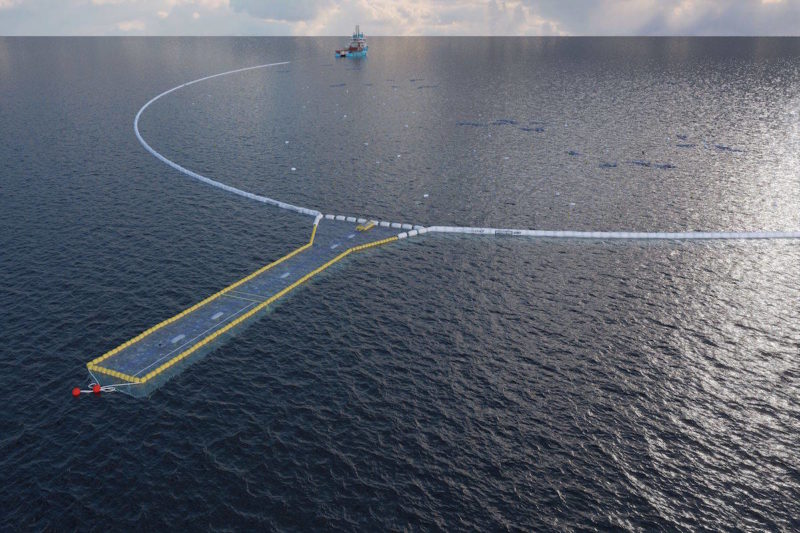New plastic clean-up technology will launch from Victoria, British Columbia, later this month, headed for one of the most densely concentrated collections of garbage on the seas.
The Ocean Cleanup project will pioneer its latest iteration of plastic-collecting technology, the System 002, when it leaves Victoria and heads to the Great Pacific Garbage Patch in late July. The concept is to drag a tensioned, 800-metre-long “artificial coastline” – nicknamed Jenny – through areas of the ocean where plastics pool in massive amounts.
Two vessels pull the System 002 at each tip of the U-shaped flexible barrier as it works to corral the floating plastics in a “retention zone.” The ships use computer models to navigate towards areas where the highest concentration of plastics – which Ocean Cleanup calls “natural hotspots” – can be collected.
The ships only move at about 0.75 metres per second, but will try maximizing the cleanup’s efficiency by navigating through the mapped hotspots, such as the Great Pacific Garbage Patch.
The Great Pacific Garbage Patch is located between Hawaii and California in the North Pacific Gyre, according to the National Oceanic and Atmosperic Administration. The “patch” is a collection of plastics of all sizes, sucked together by gyres – powerful rotating currents – and floating from the water’s surface to the ocean floor.
Once the System 002’s retention zone is full, it’s hauled on-deck and emptied, before going returning to the water to collect more. All of the collected plastics are then recycled by the organization and made into products.
If Jenny works and the vessels pull it through the plastic-dense areas with increased speed and efficiency, compared to past models, the project expects to be able to clean an area equal to a football field every 15 seconds out on the ocean.
Meet System 002, aka Jenny. In about two weeks, we are returning to the Great Pacific Garbage Patch (GPGP) with the next iteration of our ocean cleanup design. pic.twitter.com/8XZCePb4H3
— The Ocean Cleanup (@TheOceanCleanup) July 13, 2021
“It’s absolutely crucial that this test campaign goes well,” said Boyan Slat, Ocean Cleanup’s CEO and founder, while announcing the System 002. “It’s really the foundation to go to System 003 (Jenny’s successor that’s three-times larger) and then to the scale up.”
The Ocean Cleanup project’s goal is to reduce the amount of plastic in the oceans by 90 per cent by 2040. Animal species, and billions of people who eat sea animals for as a food source, are impacted by the creatures consuming the plastic pieces. The project also said plastics in the ocean are costing billions of dollars annually.











 WSANEC leadership council announces orca monitoring program
WSANEC leadership council announces orca monitoring program